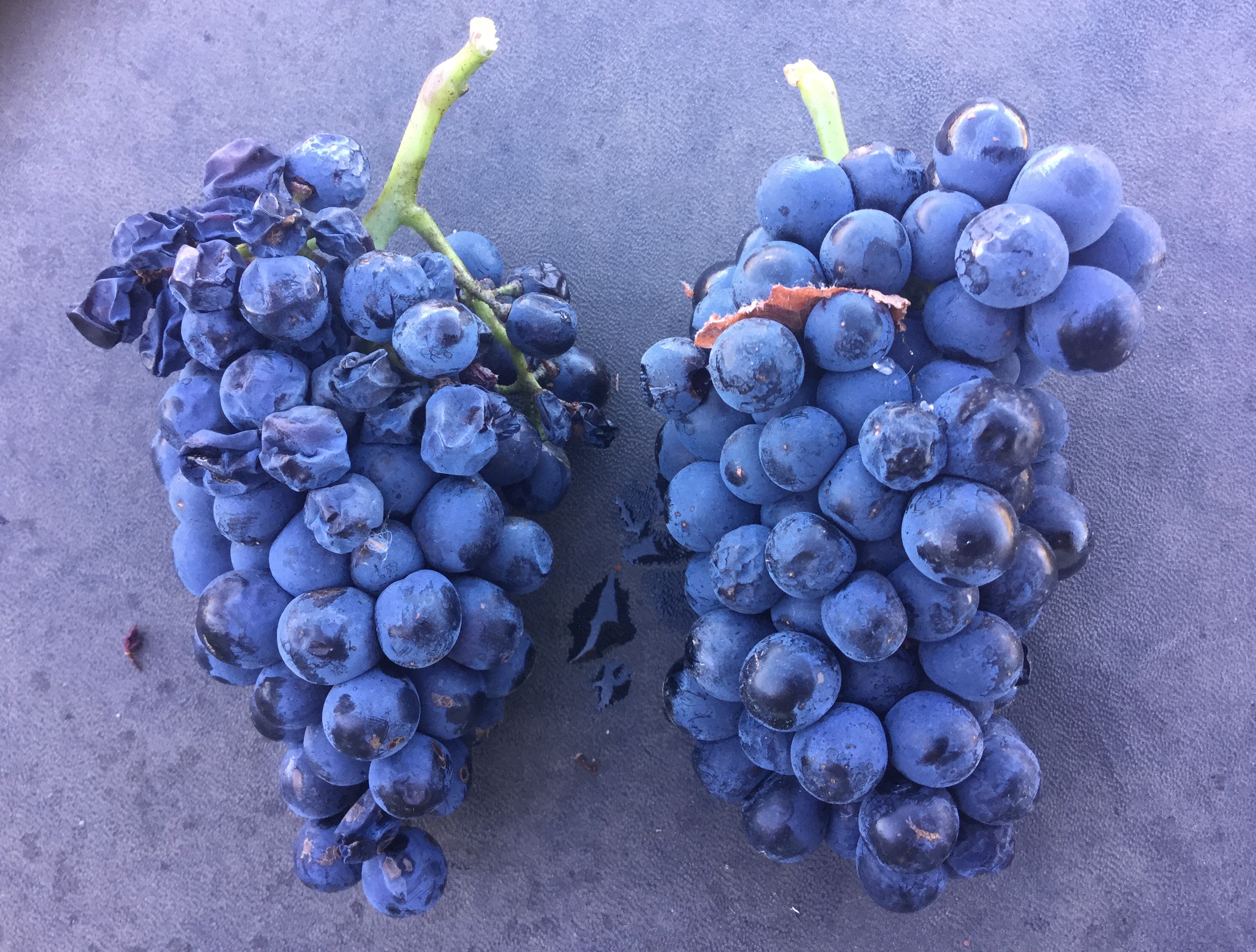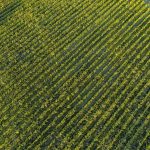Another unpredictable season is underway and although temperatures and conditions have been mostly ideal, there is a sense that heatwaves will be upon us in a short space of time, writes Sam Bowman in the November issue of Grapegrower & Winemaker magazine.
Battling heatwaves has gained some research traction in recent years with many institutions focussing on various aspects of the challenge, particularly in terms of moisture management. The advice from Wine Australia-funded research suggests irrigating before, during and after heatwaves to alleviate moisture stress associated with such events and increase transpiration as a cooling mechanism.
There are a multitude of parameters that will determine the extent of damage from a heatwave, including the vine water status, mid row and under vine management and trellis design. Many of these parameters are difficult or expensive to alter which makes the task at hand even more arduous. Bunch temperature is a vital parameter that needs to be considered and transpiration (or the use of sprinklers) can assist with lowering bunch zone temperatures during heat spikes.
With this in mind, it is hard to imagine what effect reducing or blocking transpiration would have on a vine during these conditions. Most of us have been trained to believe that the cooling effect of transpiration is vital to mitigating damage. But the New South Wales Department of Primary Industries is investigating where and how the use of antitranspirants can be implemented to reduce water loss and manage heat events.
I discussed the topic with viticulture officer Darren Fahey from NSW DPI regarding his initial research and ongoing work into the use of antitranspirants in Australian viticulture.
What are antitranspirants and how can they potentially help alleviate plant stress in heatwaves?
Antitranspirants are a group of compounds applied to plants to reduce water loss from tissues so that water stress is avoided and the normal metabolic and growth processes can continue. Filmforming antitranspirants can be synthetic (polyacrylamide, silicone oils or low viscosity waxes), inorganic compounds (kaolin clay and other silicates) or natural biopolymers (chitosan).
In this study, we used VaporGard® (now sold as Stress-Ex®), the principal component of which is di-1-p-menthene, also known as pinolene, an emulsifiable terpenic polymer derived from the distillation of conifer resins. After spraying, it forms a glossy, clear and flexible film that acts as a physical barrier to water loss.
Under heatwave conditions a sunscreen product such as a Kaolin clay (Surround®) may assist in providing further protection of leaves and bunches from heat and sun damage.
What conclusions have you made thus far in your research?
In our studies so far, antitranspirants reduced percentage water loss consistently on vine plant parts such as leaves, rachis and berries via reduced transpiration. In field trials, less berry shrivelling and bagging up occurred where the polymer had covered berry and bunch structures, resulting in higher berry and bunch weights leading to overall higher yield increases at seven of the nine trial sites in the hot dry year of 2017-18 across New South Wales.
The increases in berry size however did reduce anthocyanin levels at three of the Shiraz trial sites. However, the colour in Pinot Noir grapes at a warm dryland location and at a cool climate irrigated site increased when anti antitranspirants were applied in spite of an increased berry size, suggesting variety may have an influence.
Lower Brix readings were recorded at four of the nine trial sites.
Given we are covering the leaf surface with antitranspirants we are also curtailing net CO2 assimilation thus potentially lowering sugar accumulation as a consequence of reduced leaf photosynthesis.
Our data confirms little differences in most of the parameters tested after applying antitranspirants at the preflowering stage as a one-off treatment; greater benefit may be found with applications from bunch closure onwards.
Have you noticed any other advantages in the process that antitranspirants may be able to assist with? Reduced sugar accumulation/acid balance, for example?
In our field trials, we didn’t ask any growers to try and save on irrigation. Applications of antitranspirants may offer the potential to maintain yield and save on applied water and pumping costs.
Antitranspirants had little effect on pH or TA across our nine trial sites. No effect on phenolics was noted across any treatment or site.
Significantly lower sugar levels at harvest in the treatments where antitranspirants were applied resulted into slightly reduced alcohol percentages in experimentally made Shiraz and Pinot Noir wines compared with the control wines.
Where is the research heading this growing season?
We are aiming to look at antitranspirants on white wine varieties such as Chardonnay and are also petitioning the applications to cover only the leaf area and avoiding the fruit zone and vice versa compared with a completely covered canopy. We will look at the potential to reduce irrigation alone, coupled with mulch applications, and follow on with a second season of monitoring on the seven Shiraz sites across NSW.
This research looks promising in its early stages and may be another tool in the arsenal to combat heatwave events. With summer around the corner, a few other heatwave management tools can be employed.
Mulching undervine will assist in maintaining soil moisture and root hydration (especially important for regions with limited water resources). If mulch is not employed, keeping some undervine growth will reduce reflective heat as long as it doesn’t compete with vines for moisture. A midrow sward or grass growth has been shown to lower damage in heat events as it is more absorbent of heat than bare earth.
Avoiding leaf plucking and ensuring a healthy canopy with adequate shade will provide protection. Wire lifting can be limited to the eastern morning sun side, allowing the canopy to sprawl on the western side for protection from the most intense daytime heat.
Irrigation and moisture management is key and, in particular, entering a warm event with a hydrated rootzone.
For many, shift size will limit how quickly an entire property can be hydrated. In this case, it would be beneficial to irrigate the most susceptible vines the night before a heat event, leaving the hardier varieties or blocks that have good moisture retention capacity to be watered the previous day.
Irrigating during and after a heat event is important to replenish the lost moisture. Sunscreens are proving effective in some regions in combination with adequate irrigation. Trials of foliar kelps and potassium silicates are also looking promising and will hopefully provide another avenue of protection.
Photo: The differences in berry turgor at harvest of Pinot Noir harvested in 2017 following spraying with an antitranspirant. The fruit on the left wasn’t sprayed.



















